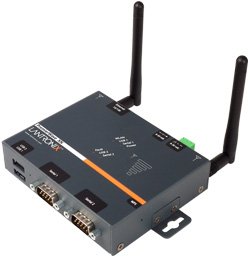The third generation of standards of accessibility and speed for mobile devices is often referred to as 3G technology.
These standards are set by the International Telecommunications Union
(ITU). 3G technology enables wireless telephone usage over a wide area,
as well as broadband internet access and video calls, all accessible by mobile electronic devices.
3G not only enables these services to be used over a wide area, but promises increased speed and bandwidth as well. Devices which use 3G are able to be used in most worldwide locations, due to intentionally engineered compatibility in the system. Although convenience and speed are enhanced with 3G technology as compared to other systems, speed depends greatly on the movement of the target device, such as a mobile phone, for example. 3G standards provide for data transfer rates of up to two megabits per second when a device is stationary or indoors, but this speed goes down to 384 kilobits at pedestrian speeds on the street, and decreases again to about 144 kilobits per second in a moving vehicle.
The name “3G” implies that there were two preceding generations, as indeed there were. First generation service was embodied in 1980s-era cellular networks called advanced mobile phone service (AMPS) networks. 1G service was analog, and took place over just one band of radio frequencies. This was more than sufficiently advanced for most customers at the time, but as the popularity and technological capabilities of mobile phone service increased, innovations were needed to upgrade service networks accordingly.
Second generation service began in the 1990s. Digital voice transmission was introduced by mobile telecommunications companies, which allowed multiple calls per channel and the use of more than one band of frequencies. The biggest jump was from 2G to 3G service, because the latter includes so much more than just phone calls. Because 3G is such an advanced technology compared with its predecessors, its implementation has not been seamless or universal. Some countries have delayed issuing 3G licenses, while in others the licenses are issued but consumer interest is modest at best.
Despite somewhat bumpy growth, 3G technology is advancing, and hundreds of 3G networks are in operation worldwide. The next evolutionary step in telecommunications, appropriately called 4G, promises still-higher data transfer rates and the ability to take advantage of a wider range of frequency bands. The speed of further 4G development will not likely be held back to wait for full worldwide integration of 3G.
3G not only enables these services to be used over a wide area, but promises increased speed and bandwidth as well. Devices which use 3G are able to be used in most worldwide locations, due to intentionally engineered compatibility in the system. Although convenience and speed are enhanced with 3G technology as compared to other systems, speed depends greatly on the movement of the target device, such as a mobile phone, for example. 3G standards provide for data transfer rates of up to two megabits per second when a device is stationary or indoors, but this speed goes down to 384 kilobits at pedestrian speeds on the street, and decreases again to about 144 kilobits per second in a moving vehicle.
The name “3G” implies that there were two preceding generations, as indeed there were. First generation service was embodied in 1980s-era cellular networks called advanced mobile phone service (AMPS) networks. 1G service was analog, and took place over just one band of radio frequencies. This was more than sufficiently advanced for most customers at the time, but as the popularity and technological capabilities of mobile phone service increased, innovations were needed to upgrade service networks accordingly.
Second generation service began in the 1990s. Digital voice transmission was introduced by mobile telecommunications companies, which allowed multiple calls per channel and the use of more than one band of frequencies. The biggest jump was from 2G to 3G service, because the latter includes so much more than just phone calls. Because 3G is such an advanced technology compared with its predecessors, its implementation has not been seamless or universal. Some countries have delayed issuing 3G licenses, while in others the licenses are issued but consumer interest is modest at best.
Despite somewhat bumpy growth, 3G technology is advancing, and hundreds of 3G networks are in operation worldwide. The next evolutionary step in telecommunications, appropriately called 4G, promises still-higher data transfer rates and the ability to take advantage of a wider range of frequency bands. The speed of further 4G development will not likely be held back to wait for full worldwide integration of 3G.

No comments:
Post a Comment